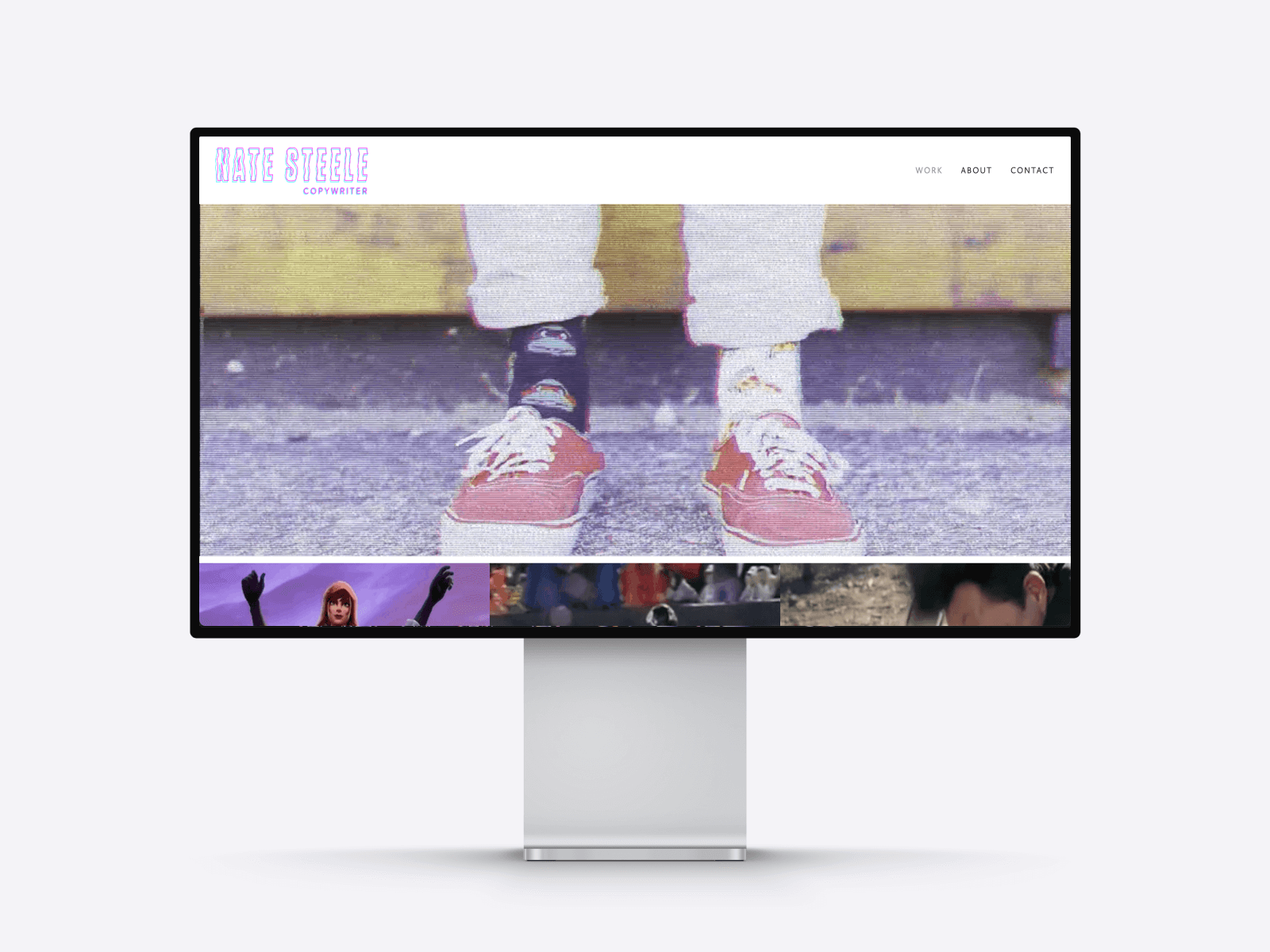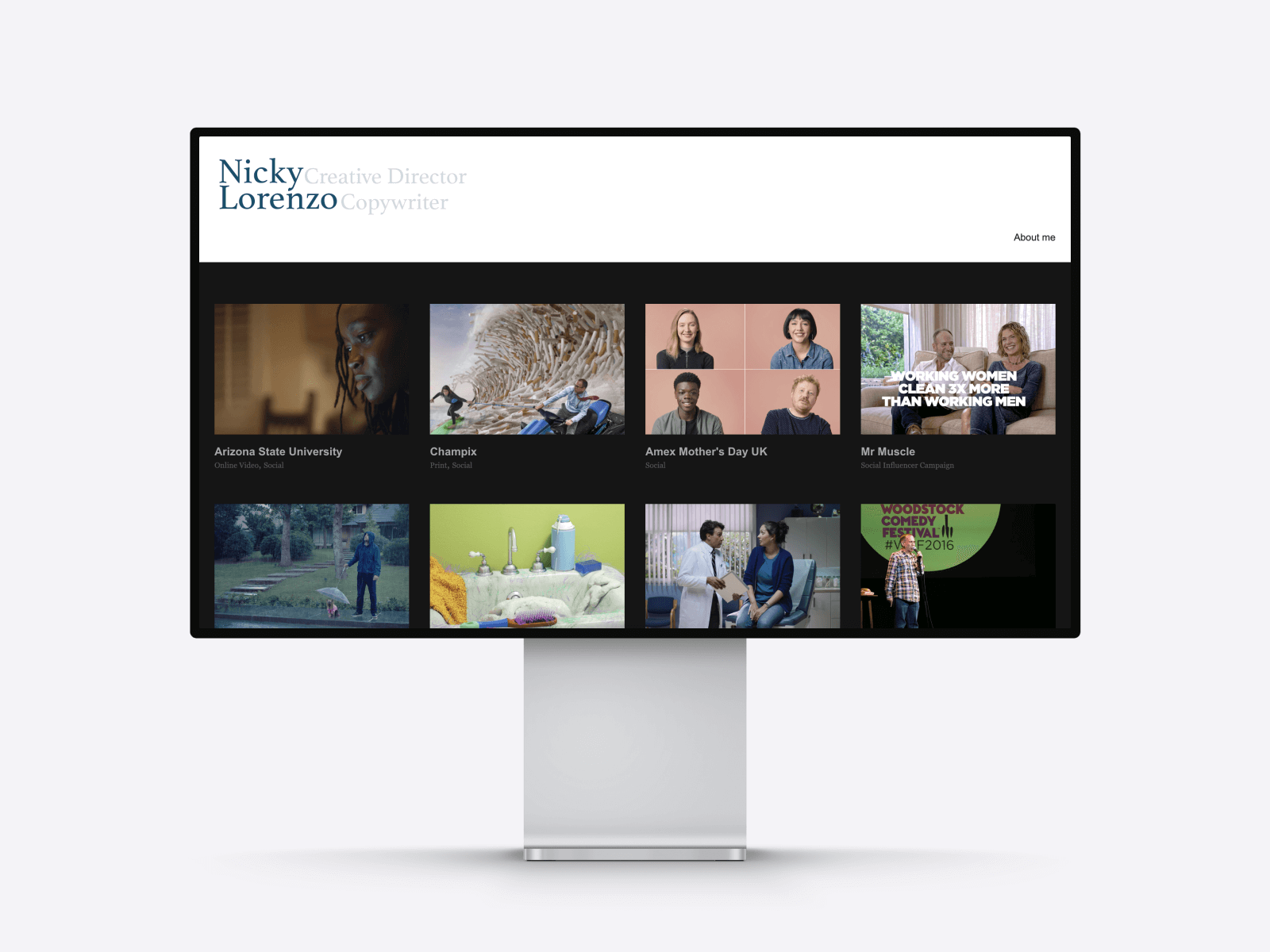Ogilvy's Elrid Carvalho: There's a story behind every piece.
Do you know how to surprise creative directors with your copywriting portfolio? Or what the biggest mistake is that you can make, while creating yours? We interviewed Ogilvy Singapore’s creative director Elrid Carvalho, who shared his journey to becoming a copywriter, insights of his work as a creative director, and answered all our burning portfolio questions.
In this post, you’ll find out what you can do if you want to apply for an agency as a copywriter with no experience —and what it is that puts creative directors off the most when looking at your portfolio. With over 15 years of experience in advertising, you know you can trust Elrid’s advice.
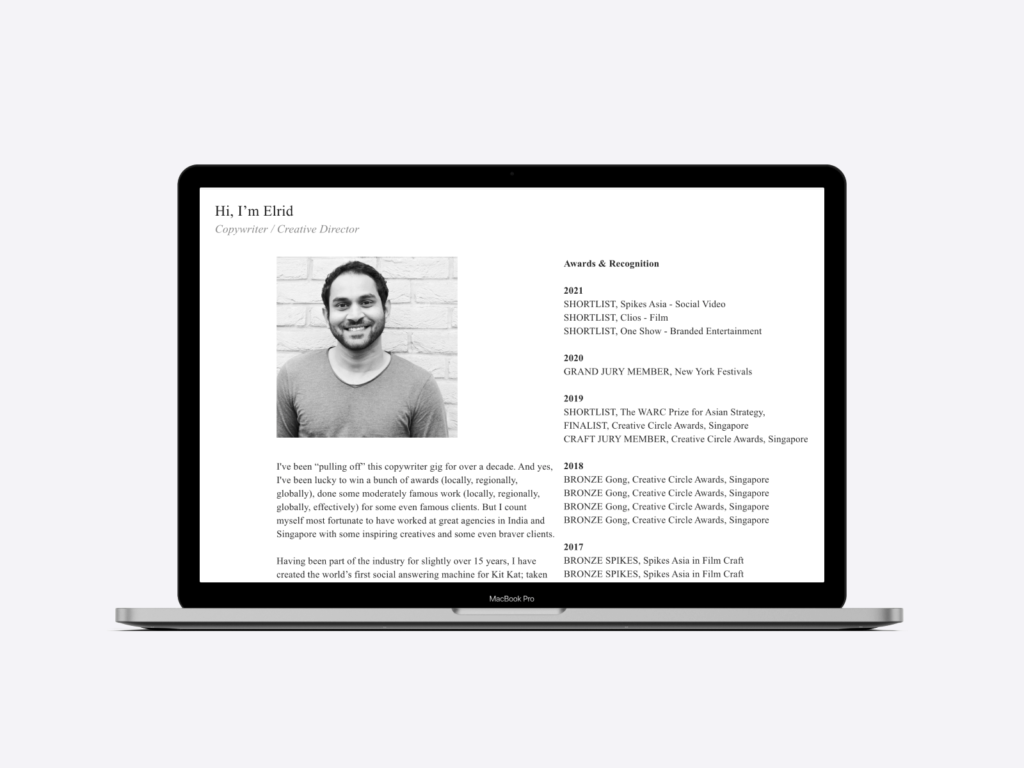
Are you also a creative director, looking for tips for building your portfolio? Check out our article about creative director portfolios!
Can you tell me how you became a copywriter?
So while I was studying for my Bachelor’s in Arts, there was a subject called advertising. It was mainly about marketing, to be honest. And there was this little paragraph in one of the chapters, about 15 sentences long, talking about copywriters, and what they do. About how they are the brains of the creative team, the ones who come up with the ideas and write the lines. That’s when I knew I had to get into advertising.
So I started knocking on agency doors asking for an internship. Not having a ready portfolio, I was offered intern roles on the account management side. I passed on it and started looking for advertising courses that could help me build a portfolio. I applied to two, one in Mumbai, and another one in a neighboring state. It was an 8-10 month course and I got my first internship after that. And the rest is history, as they say.
And how is your job now as a creative director different from when you were a copywriter?
Massively different.
But at the end of the day, it is all about coming up with ideas. So kind of the same.
I manage four or five teams depending on the brands that I work with. So, it is rather drastically different from the times I was a copywriter, because I don't really get the time to sit and think on the briefs. Instead, I am in meetings for better parts of the day, and then only at the end of the day do I get the time to actually sit down with the teams and think with them.
So it's more about management now, about creative direction. Pushing the teams to do the best that they could do. That's fun in a way because it is the progression of the craft. I try to push them as much as I can to make their work better. Because it is about their work.
And do you enjoy this role?
If my day was just eight hours, then for seven hours of the day, I don't really enjoy it. But that one last hour is really special.
Can you tell me a little bit about your creative process for when you get a new project?
As a copywriter, it was mostly sitting in on the briefing session, and understanding what's required. I used to get told off by bosses because I never really paid full attention at the brief, especially the teeny bits concerning budgets. Today, I've matured I guess. But at that point in time, I always looked at what the key message was that I needed to latch on to. It was always about: whom am I talking to? It came down to: what would I like as a consumer? Because at the end of the day I am a consumer. So it was also about what would convince me to buy this product. That's how I've always looked at briefs.
But as a creative director, it's mainly about shaping the brief. It's about making the brief as easily palatable as possible, for my creative teams. So I sit with strategists a lot, discussing what's the key message that will spark ideas.
As a creative director, you take part in hiring or at least choosing the copywriters that will join your team, looking at their portfolios.
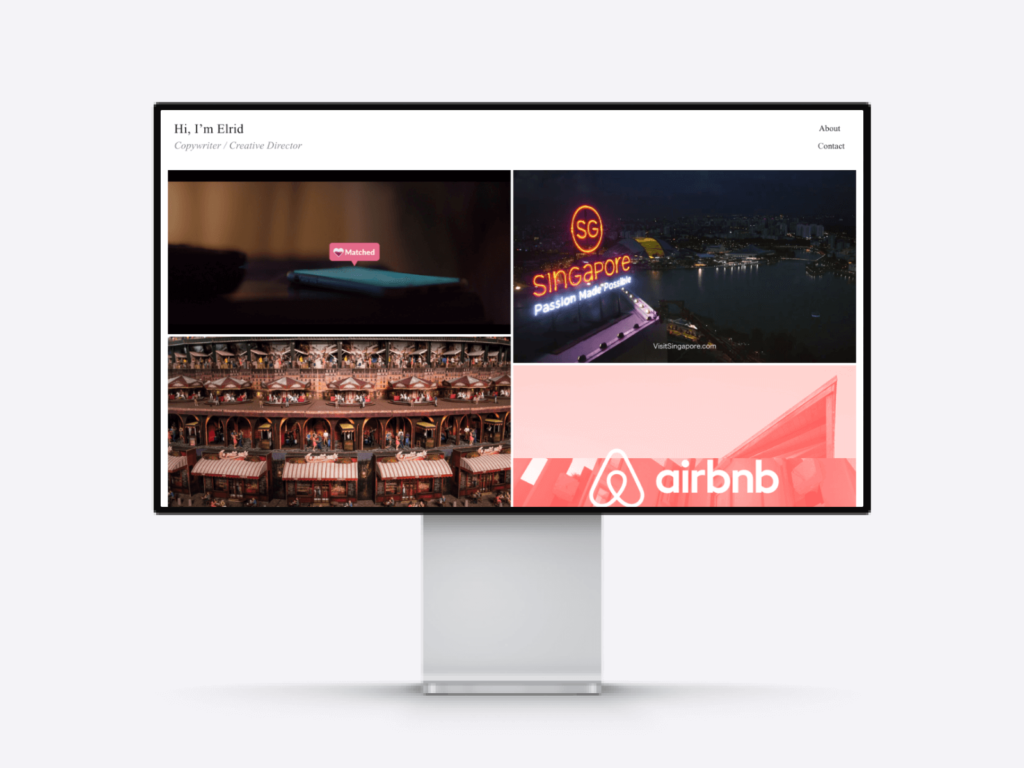
What do you look for in these portfolios, when you're reviewing them?
Different things actually, depending on what's required or what level I'm looking at. If I'm looking at a junior writer, it's not necessarily the craft I’m looking at. Because craft comes with time, but the ability to write doesn’t. You can't teach writing, but you can teach the craft.
The second thing I look at is: is it fresh? Is it new? Does it work in the times that we live in? As young writers stepping out into the world today, if they have a lot of print ads or billboards... It doesn't really work because that's not what people are doing anymore. I look at things like: Is it hacking TikTok? Is it a hack on Instagram?
There are these little bits or nuggets that always jump out to me when I'm looking at a junior’s perspective.
If I'm looking for someone who's done five years in the business then I'm looking for craft. I'm looking for whether you can tell a story. If you've got films, is there a really strong human emotion that connects to the brand? Or are you good with humor? It kind of depends on the role that's required and also the brand that I'm hiring for.
And how long do you usually take to get through each portfolio?
It depends on how much work they have in it. If I'm doing an interview, I only ask for three pieces. If I'm looking at your book, I look through everything. So when I'm looking at the websites, because nowadays everyone just shares their online portfolios, I look through the entire body of work. It gives you an implication of their state of thinking.
If they've put in ideas that are not so great, but they are proud of, then if I get to the interview, that's what I ask them about. Why did you put that in? Do you think that's good? There's a story behind every piece of work. That's what I look at. So I take my time when I'm looking at online portfolios.
Can you pinpoint any mistakes that (especially junior) copywriters should avoid in their portfolios? Something that really puts you off?
Typos. As a writer, it’s the typos. No, never. Even if it's in your bio section. Avoid typos.
The look of the website... It depends. It is not necessarily extremely important to me as long as I can find the pieces of work easily. We were hiring for a role about two months ago, and I was looking through a bunch of portfolios. Some of them have a really nice aesthetic, and they look great... But I can't find the work. Some of them are very kitschy, but I can't find the work. It misses the point entirely.
So it's mostly about the top three pieces of work, who you are, and what your interests are. That's what I normally look for in a portfolio. Because you need to be more than an advertising person. You need to bring something into advertising.
And what would you advise the very junior or totally beginner copywriters who don't have any projects or very few projects yet? What should they do to still make some kind of a portfolio?
If you're looking for a writer position, just write those lines. Explain your idea, explain your thoughts. Sometimes it doesn't matter whether you have the pretty pictures.
So you don't mind if you see a project that wasn't an actual paid project in a portfolio, as long as the concepts and the writing are good?
I just want to see how crazy you can think, yet being grounded in reality. Putting a spec work is absolutely fine in a junior’s book. I don't expect everything to be live projects.
Is there anything else that is still in your mind that you haven't mentioned?
As a creative director looking at copywriters... I think copywriting as a craft is dying, surprisingly. Which is terrible.
A lot of people think that no one reads and it's really scary. I miss seeing long-copy ads. That would be my biggest advice to a junior copywriter. Not just a print ad, write a long copy ad because it is rare. Especially in today's times, when people assume people don't read it. I think that people read what interests them. And it could be your ad, you've just got to have that hook.
Write a long-copy ad to surprise the creative directors, because they're not used to seeing it anymore. They are used to seeing Instagram hacks, so have that —but to show your craft and skills as a writer, have a long copy ad. Maybe that could be your opener.
This last piece is such great advice! I haven't heard it from anyone, but it makes total sense. As long as you catch their attention and it's something that interests people they will read it.
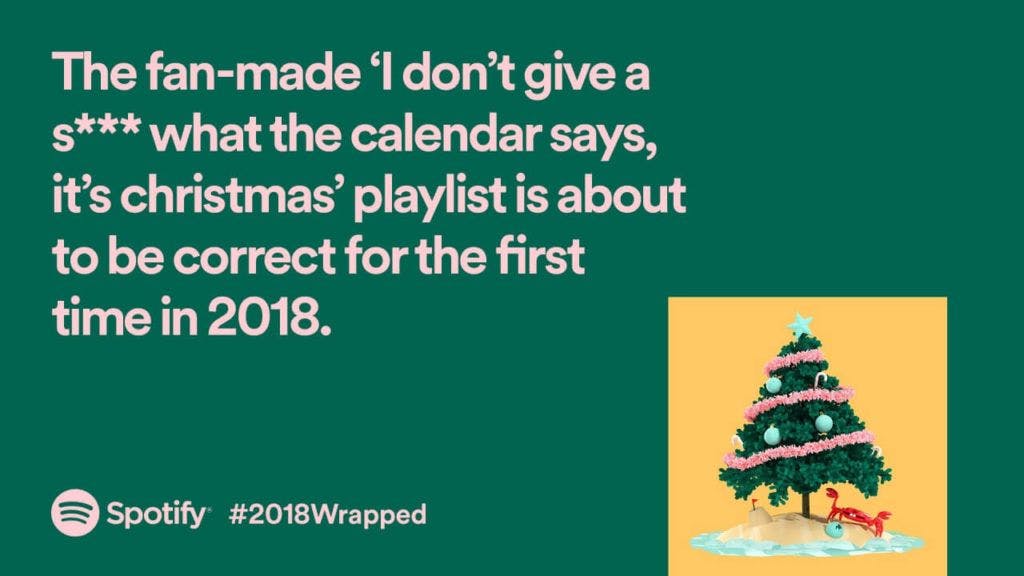
Oh yeah, like with Spotify. I think it was Spotify Wrapped in 2018 or 2017. They did a billboard campaign, which was just telling everyone about what they were listening to. That was fantastic and it was so well written. It caught everyone's eye. Long copy just turns people's heads, these days.
I keep trying to sell long-copy ads to my clients. And I prefer doing long copy ads that are outdoor pieces, not in the newspaper. Because in a newspaper I want to skip the ads and just read the articles. That's why I picked up a newspaper. But at a bus stop when I'm waiting for the bus, if I had a long-copy ad in front of me, I would read it. So that's what I would love to push.
Create a copywriting portfolio with Copyfolio that creative directors will love
According to Elrid and other creative directors we talked to, it's important that they easily find your work and can see your thought process in your portfolio. Copyfolio guarantees that your portfolio will check both off the list. How?
It lets you create an easy-to-navigate site with a clean design in a matter of minutes. When you sign in for the first time, you'll already have a site set up for you: with home, about and contact pages. And a navigation bar. On the home page, you can easily add project pages with prominent thumbnails to make finding your work quick and simple.
It helps you write the perfect case studies about your copywriting projects. You already have the project description and the video to embed? Just add two sections, paste your work and you're done in a minute. But if you don't, and you don't know where to start and what to write... Copyfolio's prompts and guiding questions will lead the way, so you can write exactly what creative directors want to see.


